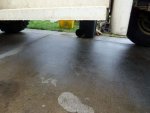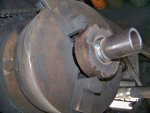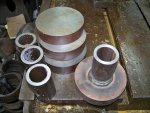brianp454
Member
- 572
- 12
- 18
- Location
- Portland, OR
As I’ve looked into this, I’ve found that there are at least two versions of this part out there (note the thick flange version has obviously deeper counterbores):
1) Thicker mounting flange with more material on the convex side and less material on the concave side
2) Thinner mounting flange with less material on the convex side and more material on the concave side
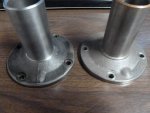
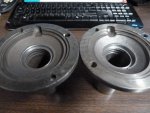
I measured 11 OEM parts yesterday and found them all to be within +/- 0.002 inch or less on any critical dimension. An in fact, they were all right on the money and completely inconsistent with gringels claims. There's absolutely noting more that can be done past 100% measuring every part and confirming they are correct. For all intents and purposes they are functionally equivalent. End of story.
Regardless, the seal as I’ve worked it out results in no loss of strength of the part. I base this on the models of the parts and applying loads in an FEA model and demonstrating that the part with the machined pocket results in no lack of strength over the original part. If the modified part has the same strength of the unmodified part how can anyone claim that the part is weak?
1) Thicker mounting flange with more material on the convex side and less material on the concave side
2) Thinner mounting flange with less material on the convex side and more material on the concave side


I measured 11 OEM parts yesterday and found them all to be within +/- 0.002 inch or less on any critical dimension. An in fact, they were all right on the money and completely inconsistent with gringels claims. There's absolutely noting more that can be done past 100% measuring every part and confirming they are correct. For all intents and purposes they are functionally equivalent. End of story.
Regardless, the seal as I’ve worked it out results in no loss of strength of the part. I base this on the models of the parts and applying loads in an FEA model and demonstrating that the part with the machined pocket results in no lack of strength over the original part. If the modified part has the same strength of the unmodified part how can anyone claim that the part is weak?
Last edited:




